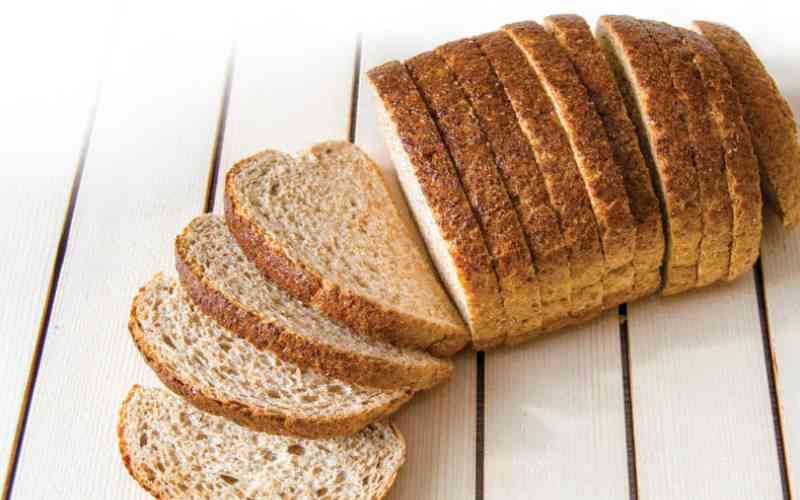
Ever wondered why the brown bread you buy from a grocery shop or supermarket is soft and has a long shelf life? Well, you may think all it takes is flour, water, and salt to make that "healthy" brown bread you cherish so much. These three ingredients, so you thought, are what it takes to make a simple loaf of bread.
Apart from the three ingredients, there are hidden ingredients such as emulsifiers and ascorbic acid. Without these, the bread would not have a soft texture or a long shelf life.
Scientists are increasingly concerned about the potential of these "hidden" ingredients and their potential impact on our health. Research has already proved that emulsifiers disrupt our gut microbiome.
"This should be a major concern to bread lovers, as bread has become increasingly a favourite commodity in many households, with bread manufacturers making a killing in bread sales," Grace Gathoni, a nutritionist, says.
Gathoni says consumers have gone a step further. Brown bread consumers are now going for other alternatives, with many drawn to the "healthy alternatives" with a higher price point. These, she says, include sourdough and rye bread, all of which are fermented.
Are these premium options healthy? Not really. A 2022 report by London-based researchers found seven bread products using the words "whole meal" to market their products that were made up of up to 50 per cent non-wholemeal flour. Furthermore, the researchers found that the "brown" colour was made from a mix of whole meal and non-whole meal flour.
"Most of the products labelled wholegrain, sourdough, and ancient grains or freshly baked bread that you are so eager to buy, or that make you go numb when you find empty shelves because others have been there before you, provide no guarantee of how, where, or when a product was made," explains the nutritionist.
Gathoni says many of the familiar terms used to describe the bread you are buying are not defined or specifically regulated in consumer protection law.
- Self care: The path to being a better parent
- How to deal with sibling rivalry
- How to introduce children to budget literacy
- Modern fatherhood: Rise of the present dad
Keep Reading
Let the buyer beware - For bread to be labelled or advertised as wholemeal according to the Bureau of Standards, all of the flour used in the bread must be wholemeal.
However, no law binds the manufacturer from adding soy flour or highly-refined gluten powder to pad out the mixture. According to Gathoni, this reduces the concentration of whole meal flour in the finished loaf.
"Some of the manufacturers add caramelised brown sugar or molasses to enhance the depth of colour, which shoppers may assume means that it is a healthier bread than it is," explains the nutritionist.
However, despite these challenges, Gathoni says, wholemeal bread is still healthier than white bread in terms of health, as wholemeal bread is made with whole grains.
According to Gathoni, whole grains contain three main components: the fibre-rich outer layer (bran), the starch-based middle layer (endosperm), and the nutrient-packed core of the grain (germ). By contrast, she explains, white bread only contains the starch-based layer - the endosperm.
"When the whole grain is used, the bread automatically becomes more nutritious as whole grains are higher in fibre, protein, healthy fats, phytochemicals, vitamins (Vitamin E and B12), and minerals such as iron, zinc, and magnesium," says the nutritionist.
Most diet experts recommend eating at least three portions of wholegrains each day, and two slices of wholegrain bread daily. This, says Gathoni, can count as one of the recommended portions.
However, she cautions: "Remember, there are many types of wholegrain foods including porridge, wheat biscuits, crackers, brown rice, brown pasta, and popcorn". "Different wholegrains contain different types of fibre and plant chemicals that feed different gut microbes, so mix them up," she advises.
 The Standard Group Plc is a multi-media organization with investments in media
platforms spanning newspaper print
operations, television, radio broadcasting, digital and online services. The
Standard Group is recognized as a
leading multi-media house in Kenya with a key influence in matters of national
and international interest.
The Standard Group Plc is a multi-media organization with investments in media
platforms spanning newspaper print
operations, television, radio broadcasting, digital and online services. The
Standard Group is recognized as a
leading multi-media house in Kenya with a key influence in matters of national
and international interest.

